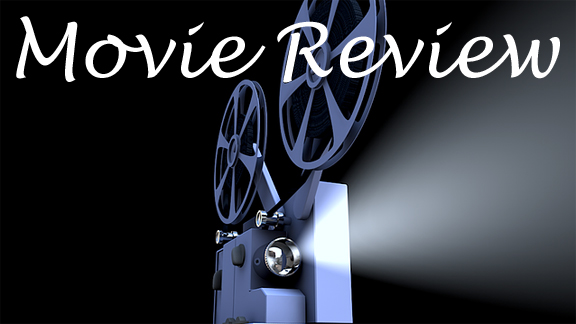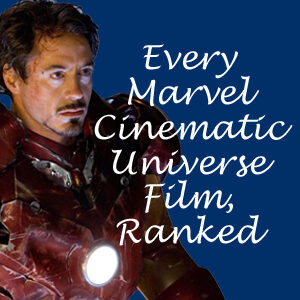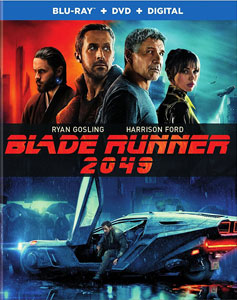“Blade Runner 2049” (2017) – now available via Redbox and streaming – brings us back into the world of the 1982 Ridley Scott classic. It feels like director Denis Villeneuve, who also helmed the overrated “Arrival” (2016) and the excellent “Prisoners” (2013), just wants to play in the sandbox of “Blade Runner,” complete with all the action figures and gadgets.
There’s no debating that this is a gorgeous film, but every scene is twice as long as it needs to be for story purposes, and the characters are nearly copies (give me credit for avoiding the “replicant” pun) from the original, starting with blade runner K (Ryan Gosling) standing in for Deckard (Harrison Ford). If you just want to soak up the “BR” vibe again, you’ll be in heaven; if you expect new sci-fi themes or ideas, you’ll be let down.
Filmmakers mine PKD’s book further
As a fan of Philip K. Dick’s “Do Androids Dream of Electric Sheep?,” I appreciate the way Villeneuve and writers Hampton Fancher (returning from the original) and Michael Green mine the book further. References to whether animals, such as Deckard’s dog, are real or not are peppered throughout the script; Deckard’s desire to own a real animal was central to the PKD novel but largely set aside in the first movie. Additionally, “2049” takes us to more wasteland spaces; in the book, it was Oregon that was irradiated, here San Diego is for some reason a garbage dump and home to a black-market children’s orphanage/sweatshop.

“Blade Runner 2049” (2017)
Director: Denis Villeneuve
Writers: Hampton Fancher, Michael Green, Philip K. Dick
Stars: Harrison Ford, Ryan Gosling, Ana de Armas
If San Diego is not irradiated (and it’s apparently not, since people live there), it seems like a bad place to turn into a dump. It seems like the Nevada desert, for example, might be a better place to discard trash from the still-functioning cities. Thoughts like this entered my mind throughout my viewing.
The world of “2049” is artistic as heck, and it follows from the 1982-style 2019 of “Blade Runner,” complete with dominant electronic Atari billboards in Los Angeles. But it’s hard to grasp the reasons for why the world is how it is. Why does it always rain in L.A.? Why was Las Vegas abandoned, thus making a nice hideout for Deckard? Since the film is 2 hours and 44 minutes long, it seems there would be time for answers.
Some unanswered questions are forgivable, though, because three decades had to pass between films in order to explain why Ford’s Deckard is three decades older. Fancher and Green anchor the film around K’s quest to learn if he is the first child born of a replicant – Rachael (Sean Young) from the first film – and, if he’s not, to find out who that offspring is.

Gosling gives a compelling performance despite being mostly blank-faced. He’s an audience surrogate because he doesn’t seem to enjoy living in this world any more than we enjoy sticking with every scene longer than we need to. (That having been said, “2049” is always beautiful to look at, so it’s a paradox. I know the movie moves extremely slowly, but I kind of want to excuse it: “It’s the ‘Blade Runner’ aesthetic, after all.”)
Familiar Chosen One story
But the idea of a miracle child being a savior for the oppressed group and a target of the ruling status quo is very familiar; indeed, Green told the same story in “Logan” earlier in 2017. See also “Children of Men” and the “Star Wars” prequels. “2049” has nothing new to say.
(The question of who is human and who is a replicant is of course just below the surface of this movie. The point is well made: When humans and replicants are identical – except for a soul, which isn’t a real thing – it’s silly to spend any time worrying about who is which. But the original film already covered this issue.)
On the other hand, “Blade Runner 2049” is pretty, both in sight and sound. Benjamin Wallfisch and Hans Zimmer start with the synth stylings of “BR” composer Vangelis (whose track “Tears in Rain” is credited on this movie, too) and add a bit more muscle.
A visual continuation of the original
Visually, “2049” has a lot of those wonderfully sad early 1980s-style interiors. The office of Tyrell corporation bigwig Luv (Sylvia Hoeks) – this film’s answer to Rachael – has soothing beige light waves on the wall (Maybe old-fashioned light bulbs survived in this future). A government office is all done up in amber, and there’s a little slit of a window where K can duck down and talk to the clerk. Deckard’s Vegas hideout feels sand-covered, even if it isn’t totally. Human prostitute Mariette (Mackenzie Davis) has orange hair and a yellow shirt.
The yellow tones are contrasted by the rain-soaked blue-and-purple neon in Los Angeles. K’s hologram lover, Joi (Ana de Armas) – a stand-in for the original’s Pris (Daryl Hannah) — is neon purple with blue hair in her default mode. Do the color choices symbolically mean something? Almost certainly. And I also wouldn’t be surprised if the proportions of colors were decided upon because they were found to be pleasing to an audience. Indeed, there is a spell-like quality to “2049” that can’t be dismissed.
But the overall product is too empty. Granted, it’s often deliciously empty in the way K acts like he’d just as soon be dead, except for the bittersweet pleasure of his hologram lover. In style and mood, “2049” is a wonderful tribute to Scott’s film and the works of PKD, but I doubt either of those sequel-phobic artists – who look(ed) for something fresh in each project — would’ve bothered with this story.

